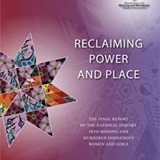 Dear readers, Here we are at the final chapter. With the earlier ones, I read online, summarized themes on paper, then transferred my reviews to blog.
Dear readers, Here we are at the final chapter. With the earlier ones, I read online, summarized themes on paper, then transferred my reviews to blog.
I wanted to give Chap 8: Confronting Oppression ~ Right to Justice more attention so I printed all 96 pages and have been reading and highlighting in my spare time. Now I find there is more I want to share so I will present Chapter 8 in three parts. This is part One.
In defining “Justice”four universal principles apply: (1) accountability, (2) just laws, (3) open government, and (4) accessible and impartial dispute resolution. The United Nations states that justice is vitally like to reduction of poverty and strengthening of democratic government.
A human rights based approach to justice involves: (1) focusing on immediate as well as underlying causes of the problem, (2) identifying “claim holders” as those most vulnerable, (3) identifying “duty bearers” as those responsible for addressing issues, and (4) putting systems in place to allow claim holders to access their rights and duty bearers to meet their obligations.
In Canada Indigenous Peoples have had very little reason to be confident the justice system is working for them. The Indigenous concept of justice addresses how people keep each other safe.
Indigenous women are vastly more likely to become involved in the criminal justice system that non-Indigenous women. The misuse of justice routinely compromises their rights and allows violence to continue.
Again the issues are examined from the lens of the four identified pathways to violence.
(1) Inter-generational and Multi-generational Trauma: When a love one is believed to be missing, the family faces a difficult dilemma. Seeking help requires reaching out to institutions – police and criminal justice – that have historically ignored their concerns. If families do reach out, they are often viewed through a lens of racist and sexist stereotypes that blame them for the difficulties they face.
The under-reporting of interpersonal violence is well documented among all victims of crime in Canada. On a larger scale, the historic denial and unwillingness to investigate the disappearance or death of many Indigenous women sent the message that the police were indifferent to such violence. Stereotypes such sex workers effectively erases the acts of violence committed against them.
(Personal note: When I tried to report my daughter missing in 1997, the buzz word was “high risk.” I naively thought that identifying someone as living a high risk lifestyle would add credibility to their disappearance – but no, that seemed to imply she was responsible for her own victimization. For me, the issue was bigger than racism – it was a systemic criminalization of vulnerability.)
(2) Social and Economic Marginalization: The social and economic marginalization of Indigenous Peoples create significant barriers, racism, and discrimination in their access to justice and justice-related resources.
For many women, their fear of contacting police in relation to violence was that child protection may become involved and remove their children, or that they would be arrested themselves. These fears are not unfounded.
DEEPER DIVE: Criminalizing and Incarcerating Indigenous Women (p.635): The over-representation of Indigenous women is Canadian prisons is intimately tied to colonization – specifically through violence, poverty, and disruption of family and community life. (Although only 4% of the Canadian population, they make up 40% of the federal prison population. It was also noted that Indigenous women tend to be younger on admission, poorly educated, and have more connections to violence, as well as mental health and addictions issues.)
The over-criminalization of Indigenous women is largely a result of colonialism – poverty, food insecurity, mental health issues, addiction, and violence. The Canadian justice system often criminalizes acts that are a direct result of survival, ignores the systemic injustice, and so is unable to effectively address rehabilitation.
The majority of incarcerated women suffer from mental health issues with little access to appropriate programs. As well, many suffer from a loss of cultural identity and spiritual well-being while incarcerated. While the role of Elders is recognized as significant, there are simply not enough.
Creating Choices, a task force released in 1990, noted that “only if people are treated with respect, only when they are empowered, can they take responsibility for their actions and make meaningful choices.”
A Gladue report is to contain recommendations about an appropriate sentence. However, this has been largely ineffective for women for a number of reasons. Some felt their histories were used against them. There were also a number of problems associated with parole and release.
For the Path Forward, Indigenous people must be active participants in solutions for the underlying issues of incarceration – trauma, poverty, and other effects of colonization – by using strengths of cultural practices for healing. Sacred justice means focusing on healing relationships, not punitive actions.
Findings (p.644):
- Indigenous women and girls are being criminalized as a result of their resistance to colonial violence.
- The federal government has failed to take meaningful actions to implement numerous recommendations.
- The federal government has not sufficiently invested in Indigenous specific provisions of the Corrections and Conditional Release Act.
- Mandatory minimum sentences are especially harsh for Indigenous women and girls as Gladue principles are not applied.
- There is a shortage of Elders working in correctional institutions in Canada.
- The failure to collect data prevents a true understanding of the circumstances.
- The vision for women’s corrections, as set out in Creating Choices, has been abandoned.
- The separation of mother and child due to incarceration of the mother is a violation of the child’s rights. The CSC mother-child program is under-utilized.
- Failure to recognize and treat mental health needs is a violation.
- Segregation can amount to cruel, inhumane, and degrading punishment and should be characterized as a violation of human rights and institutional violence against women.
- Strip-searches are state-sanctioned sexual assault, and violate the human rights and dignity of women and girls.
- The maximum security classification represents sex-based discrimination and limits federally sentenced women from accessing services, supports, and programs.
- Culturally appropriate and trauma-informed models of care are not consistently available.
- Indigenous women have limited opportunities for meaningful vocational training and educational upgrading. This impedes their rehabilitation and reintegration into the community.

